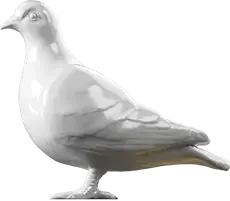Social History — C. 1880-1920
Horse brass
This type of horse brass is known as a bell-type 'flyer', 'swinger', 'terret' or 'fly head terret' and would have been worn by a horse working in London in the late 19th or early 20th century. It would have been fixed to the horse's headpiece, saddle or rump straps and is named after bells that swing from the main frame.
The origins of horse brasses are unknown, but from the middle of the 19th century they became increasingly popular as decorations fixed to working horses' harnesses. They were most commonly round and flat. During the 19th and early 20th centuries horses adorned with brasses were an everyday sight on London’s streets, reflecting the central role they played in London’s life and economy as the main method of short distance transport. Common designs included suns, wheat, horses, swans and heraldic images.
Horse brasses reached a peak in popularity just before World War I but during the 1920s, as motor vehicles replaced horses, they began to decline. By the 1950s they had all but disappeared from London’s streets. During their peak, however, companies often had their own brasses marked with their name. Railway and brewery company brasses were particularly common. Royal commemorative brasses were also popular, the first ones being produced to mark Queen Victoria's Golden Jubilee in 1887.
- Category:
- Social History
- Object ID:
- NN3353
- Object name:
- horse brass
- Object type:
- Artist/Maker:
- —
- Related people:
- Related events:
- Related places:
- Production date:
- c. 1880-1920
- Material:
brass
- Measurements/duration:
- H 195 mm, W 180 mm (overall)
- Part of:
- —
- On display:
- —
- Record quality:
- 100%
- Part of this object:
- —
- Owner Status & Credit:
Permanent collection
- Copyright holder:
digital image © London Museum
- Image credit:
- —
- Creative commons usage:
- —
- License this image:
To license this image for commercial use, please contact the London Museum Picture Library.
